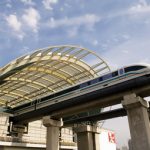Two surveys call for action

Two surveys released last month show serious shortcomings in the South African freight logistics setup, with both claiming that South Africa not only lacks the logistics infrastructure, which pushes up logistics cost, but reporting some additional findings that have surprised several people in the industry, writes UDO RYPSTRA.
The long-awaited 7th State of Logistics survey, considered one of the premier references for logistics in South Africa has, as expected, pointed to an underperforming logistics sector, within a recessionary context. But what has surprised many is a consistently high total cost of logistics which decreased by only 1,2% between 2008 and 2009, from 14,7% to 13,5% of GDP, when it should have decreased by ten times that.
The survey, released by the CSIR, Imperial Logistics and Stellenbosch University, came out within days of another survey of 300 executives done by Frost & Sullivan, and commissioned by Barloworld, which shows that no less than 70% believe that a lack of general business skills is hampering South Africa economically against its competitors. Only 48% of those surveyed said their business had the necessary logistics and supply chain skills. In addition, 72% also said there was a skills crisis in inventory management within parts of companies based in South Africa.
To alleviate the skills problem, 44% of organisations said they had trainee or management development programmes for procurement and sourcing. But while companies focused on developing skills, there was frustration at the lack of progress in South Africa’s supply chain infrastructure.
Total tonnage
Looking at the background against which all this is happening, the 7th SoL report reveals that total tonnage and ton-km decreased in 2009 by 4% and 3,7% respectively, with a reduction in transport costs of 9,2% − much less than the fall in the price of diesel (28,3%).
Totalling R22,7 billion, the majority of the country’s externality costs were caused by road transport. At R10,9 billion, accidents comprised the largest cost component, followed by the impact of emissions at R5,2 billion and that of congestion at R4,5 billion. “Transportation costs, which have always been the highest cost element locally, seem to be equally high contributors to logistics costs in most other countries, whereas our administration costs remain comparatively high.” Commenting on the logistics cost findings, Hans Ittmann, executive director of CSIR Built Environment said total logistics costs should have been significantly lower in 2009, due to the financial crisis and contraction of the economy.
 “It would have been fair to have expected this percentage to have dropped to a level of closer to 12,5%, given the downward changes in the two leading cost drivers, namely the sharp drop in the price of diesel and in the interest rate.” He pointed out that for the first time since the launch of the survey there had been a decline in transport activity on all typologies, except bulk mining, with the tonnage split between road and rail having remained almost the same at 88,7% on road, and 11,3% on rail.
“It would have been fair to have expected this percentage to have dropped to a level of closer to 12,5%, given the downward changes in the two leading cost drivers, namely the sharp drop in the price of diesel and in the interest rate.” He pointed out that for the first time since the launch of the survey there had been a decline in transport activity on all typologies, except bulk mining, with the tonnage split between road and rail having remained almost the same at 88,7% on road, and 11,3% on rail.
Only profitable rail infrastructure was used, while larger components, notably the branch lines in the more rural areas were not utilised, while simultaneously becoming increasingly dilapidated. “In terms of rail as a freight transportation mode, we could be dealing with a ‘low cost, low service’ situation compared to a ‘high cost, high service’ one.”
The survey also states that while investment into transportation infrastructure has been necessary, it has been costly. “A major concern is the effect of the recovery of infrastructural development costs over the next few years,” said Ittmann.
The survey reiterates the need for closer collaboration between the public and private sectors to deliver economic infrastructure that supports economic growth and job creation and to tap into the current commodity up-cycle. “Government recognises that logistics and supply chain management are critical for the competitiveness of the country. According to the recent New Growth Plan for South Africa, bottlenecks and backlogs in logistics hamper economic growth and raise costs,” commented Ittmann.
Dealing with road and vehicle maintenance costs, the 7th SoL survey reports that in 2009, the estimated road maintenance costs per lane per kilometre on a national road were R150 000. It was assumed that the vehicle maintenance and repair costs on roads ranging from good roads to bad ones varied between R0,96 and R2,11 per kilometre. These costs were only a component of the total vehicle operating costs, with others being fuel, oil and tyre costs. The resulting total vehicle operating costs varied between R3,00 per kilometre for a good road and R7,00 per kilometre for a bad road.
Disenchantment
The Frost & Sullivan survey endorses the lack of logistics infrastructure. “While there is general disenchantment, and even anger, among the private sector regarding their powerlessness to do anything to improve the quality of the country’s infrastructure, they are nevertheless willing – and urgently wish to engage with government to find solutions,” it says.
It noted that while significant improvement in infrastructure in comparative emerging economies such as China, Brazil and Russia, South Africa has only shown marginal improvement in this regard. Respondents wanted to see additional rail capacity for the movement of goods and public-private co-operation in the rail sector at a strategic and decision-making level in South Africa.
“The key question that emerges from our research this year is, how do we respond to the emerging market challenge on a global scale?” the report asked. “While it is unlikely that the global economy will see the levels of growth and demand that characterised the boom of five years ago, as an important emerging economy ourselves we have to be able to respond to the growth and competitive challenge posed by other emerging markets. We cannot let our skills and infrastructure challenges drag us down in those efforts.”
Inventory
The 7th SoL survey reports that in 2009, the average inventory requiring financing increased by 15,2%, from R416 billion to R513 billion. Inventories relative to output increased from 17% to 21% between 2007 and 2009. The survey explains that as the recession deepened, inventories built up due to lower consumption.
“This, in turn, led to larger inventory holdings that needed to be financed and also to less efficient transport due to lower volumes and more empty-hauls. Inventory carrying times increased from 12 to 15 days on a weighted average basis.” However, the cost of storage, handling, stuffing and picking (at current prices) rose by less than the inflation rate, alleviating the cost impacting on rising inventory levels to some extent and leading to an overall increase in storage costs of 1,2%.
Outsourcing
Outsourcing is dealt with in the 7th SoL report. According to the survey, approximately one-third of transport activity in South Africa is outsourced. “The major growth opportunity for road hauliers is not among available outsourced freight, but rather growth in outsourcing, often achieved by total logistics arrangements that can highlight savings on cost of ownership,” said Marius Swanepoel, CEO of Imperial Logistics.
“While traditional supply chains offer three primary benefits, namely reduced costs, faster delivery and improved delivery, these advantages are no longer sufficient in the modern business world. A new paradigm is emerging where supply chains should also serve as a vehicle for developing and sustaining competitive advantage under a variety of performance objectives.” He said effective outsourcing could reduce logistics costs by optimising loads, orders and capacity.
“Only as good as their weakest link, supply chains should provide one or more of six basic outcomes, namely cost, responsiveness, security, sustainability, resilience and innovation.” Apart from the logistics costs report released annually by the US, the State of Logistics survey is the only other report that covers the annual logistics costs of a particular country. It is usually eagerly awaited, as the reports published during the past seven years can be used to track trends of various important logistics factors within the country.
This year, it also deals with “green” logistics (including “extra distance” measurement); deteriorating road quality and benefit-cost analysis; supply chain risk management; the skills issue; and rural logistics.
Published by
Focus on Transport
focusmagsa



